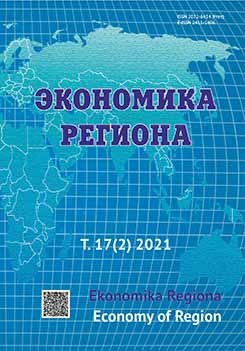Влияние высшего и среднего профессионального образования на развитие экономики Ханты-Мансийского автономного округа — Югры
Influence of Higher and Vocational Education on the Economic Development of the KhMAO-Yugra Region
Author(s): Tatiana Karminskaya, Vadim Faruarovich IslamutdinovSubject(s): Economy
Published by: Институт экономики Уральского отделения Российской академии наук
Keywords: higher education; vocational education; institutional structure; institutional traps; economic development; Khanty-Mansi Autonomous Okrug–Yugra; human capital
Summary/Abstract: The Khanty-Mansi Autonomous Okrug — Yugra (KhMAO-Yugra) is classified as one of Russia’s northern resource-extracting regions, the contribution of human capital to whose gross regional product (GRP) is typically negligible. In this context, the study investigated the impact of higher and vocational education on the development of the region’s economy. The objective of the research was to identify the direction and influence of human capital — in particular, higher and vocational education — on the economic development of KhMAO-Yugra. Despite the resource-extracting character of this region’s economy, its development can still be influenced by the quality of its human capital, as well as by institutional traps in the higher and vocational education system. Economic-statistical research methods — including multiple correlation and regression analysis — were used in combination with an abstract-logical approach. Along with an examination of the regional higher and vocational education system, the influence of its dynamic and structural factors on socio-economic development indicators is revealed. Predictions of GRP and average monthly salaries in KhMAO-Yugra until 2030 are offered. Institutional traps inherent in the region’s current higher and vocational education system are described. Factors identified as having the most significant positive impact include the number of postgraduate students, as well as bachelor-, specialist-, and masters-level graduates. The most harmful institutional traps are shown to be departmental affiliation, applicant preferences, minimum tuition fee and low unemployment rate. If current trends in the region’s education and scientific systems are maintained, stagnation of its economy is likely to occur, resulting in a reduction of the region’s attractiveness to young professionals. The findings of the study can be applied when making changes to regional development programmes. More research is needed to determine economic development priorities in terms of human capital or resource extraction.
Journal: Экономика региона
- Issue Year: 17/2021
- Issue No: 2
- Page Range: 445-459
- Page Count: 15
- Language: Russian

